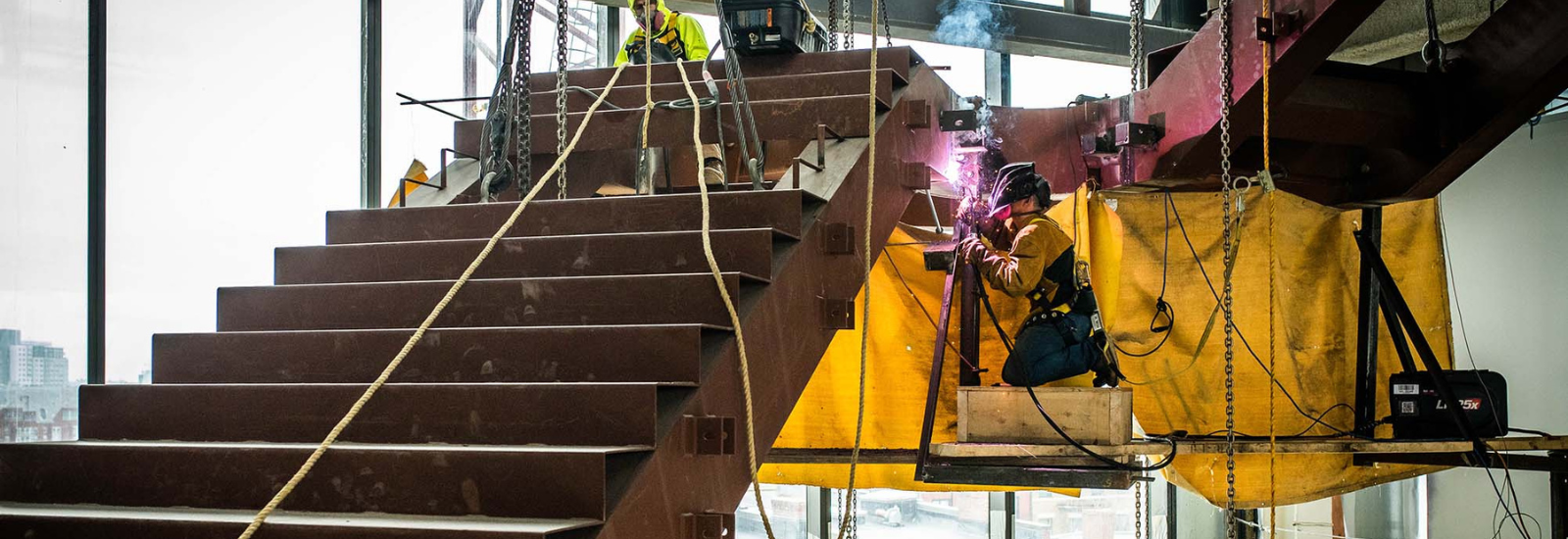Posted April 2023
The new Duan Family Center for Computing & Data Sciences (CDS) is at the top of its class in every way—from architecture, to resources, environmental sensitivity, and intentional space for collaboration. Working with students to advance the field of data science for a better society, the new CDS faculty hail from 11 of BU’s schools and colleges. In addition to uniting the departments of Mathematics & Statistics and Computer Science under one roof, the impressive structure illustrates what’s possible for the future of energy efficient buildings. In celebration of Earth Day, check out these five key aspects of the Duan Family Center for Computing & Data Sciences that make BU’s newest building a leading example in the world of sustainable architecture.

Fossil-fuel free
Designed by KPMB Architects in Toronto, the Duan Family Center for Computing & Data Sciences stands as the largest fossil-fuel-free building in Boston at 19 stories tall. The Center relies on deep wells to harness the thermal capacity of the earth for heating and cooling—meaning that it does not require gas. It will be the first BU building to be able to make this claim.
Energy efficient
The building’s design minimizes energy consumption using energy-efficient strategies including external sun shading devices to triple glazing on the windows to enhanced heating, ventilating, and air conditioning (HVAC) systems. The Duan Family Center for Computing & Data Sciences’ ability to manage energy consumption helps lower BU’s carbon footprint. In total, the building also holds 31 boreholes, each 1,500 feet deep—a system that expects to provide over 300 tons of heating/cooling capacity.

Solar shades
The building’s cutting-edge exterior shades help control the solar heat gain inside and reduce glare that can make viewing computer screens and whiteboards particularly challenging. The external shades also prevent heat energy from entering the building, so less cooling will be needed to keep occupants comfortable during the warmer months. Lowering the temperatures while lowering energy use, the building actively conserves energy and adjusts to Boston’s variable climate.
Reducing chemicals
Since the chemicals that make a car or building smell brand new have negative health implications, the CDS’s designers chose sealants and finishes for the building that have low or no volatile organic compounds. Putting student and faculty health first, the Duan Family Center for Computing & Data Sciences is also increasing sustainability by the elimination of harmful chemicals.

Social sustainability
In addition to being eco-friendly, the Duan Family Center for Computing & Data Sciences is designed to facilitate social connection. The building’s transparent podium invites students and faculty to study and gather, and a cascading staircase proves to be more appealing than the elevator. By promoting sustainability in both social and environmental ways, the Duan Family Center for Computing & Data Sciences is making huge strides for BU.
From eliminating fossil fuels to promoting social connection, the Duan Family Center for Computing & Data Sciences shows what is possible for sustainable urban design. As Boston University continues to work towards an environmentally conscious campus, the CDS serves as the perfect embodiment of this mission.
Q&A with Director of BU Sustainability Lisa Tornatore (CAS’02)
Learn more about sustainability at BU
